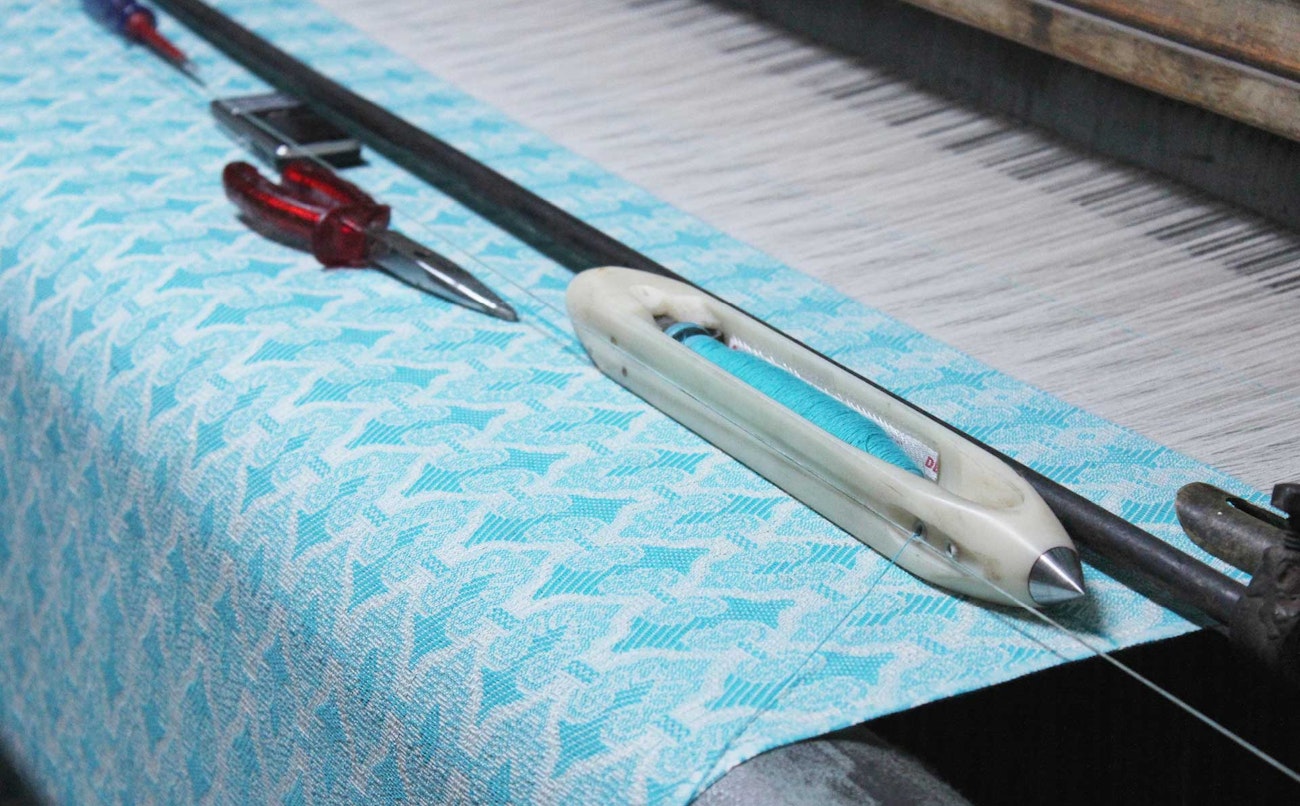Enjoy reading about Turkish towels and then weave your own version using Cynthia Newman and Katzy Luhring's pattern for the Big Wrap Beach Blanket in Handwoven May/June 2022. I saw (and touched) the towel at Convergence 2022 and I can tell you it is luscious! ~ Susan
The year is 1600. You are walking down a busy street in Denizli, a bustling town in the center of the vast Ottoman Empire. The valley community is laced with rivers, and to the west sit emerald-green mountains, habitually topped by a halo of puffy white clouds.
Denizli is a city of industry. Wine flows freely from local vineyards, ready to be sent throughout the region, and fields of cotton blow in the wind waiting for harvest.
As you walk through the streets, you are enveloped by sound and color. You hear myriad tongues and see the houses of worship from a mosaic of faiths. The architecture is also a patchwork, showcasing the town’s Greek history and current Muslim majority.
In Denizli, it seems every road leads to one of the city’s 16 bathhouses, and along with diverse languages, you hear the click, click, click of countless looms, turning cotton into cloth.
The history of Turkish towels is woven within the expansion of an empire. From 1300 until 1922, the vast Ottoman Empire encircled the Mediterranean. Multiethnic life in the Ottoman Empire sprang naturally from the region’s diverse history, and Greek, Roman, Byzantine, Mongol, Persian, and Egyptian customs were prominently visible in society.
One of these customs was the hammam, or Turkish bath. Public baths were an important part of ancient Roman and Byzantine empires, and as the Ottoman Empire spread, the hammam became just as important. Ottoman hammams were a place to meet friends, make deals, and debate policy, and they were an integral part of rituals surrounding marriage and birth. Similar to the classical Roman baths, they featured an undressing room and a series of communal pools filled with cool, warm, and hot water.
Turkish baths could be privately owned, but during the height of the Ottoman Empire, they were seen as integral civic spaces and were usually managed by the government and paid for with taxes. They became a space to showcase the grandeur of the empire and were often architecturally stunning.
By the seventeenth century, hammams allowed women, though men and women bathed in strictly separate areas. The baths became one of the few acceptable public spaces for women to gather.
All of this public bathing in a Muslim-dominated empire caused a conundrum. Religious leaders were concerned about preserving modesty but still wanted hammams to thrive, allowing the faithful a place to ritually bathe themselves before prayer.
Enter the peshtemal (sometimes written as pestemal), known colloquially as the Turkish towel. Coming into use in the early 1600s, peshtemals were flat-woven, hand-embroidered, long enough to completely envelop the body, and were originally intended to help bathers maintain privacy in public baths. They were lightweight enough to be easily transportable and were made of absorbent cotton.

A partially woven peshtemal made by one of the weavers at Jennifer’s Hamam using traditional weaving methods and locally sourced Turkish cotton.
Historically, the purchase of a peshtemal might mark a momentous occasion, such as a wedding or birth. Unique patterns were woven into the fabric, representing different regions. The towels were considered a luxury until the industrialization of the nineteenth century.
Cotton had been grown in the region for centuries, with evidence of cultivation dating to 400 BCE. In general, Turkish cotton has longer fibers than other global varieties. These longer fibers, combined with a flat weave, created a towel that was extremely absorbent for its weight and thickness.
By the time of the peshtemal’s advent, the region that is now Turkey was already well known for the manufacture of luxurious carpets. As the Ottoman culture spread through the area, new weaving techniques merged with traditional craft. As peshtemals became more desirable, wealthy citizens demanded complex and elegant designs from the weavers. After a century of ever-increasing intricacy, weavers introduced a new technique of creating looped pile using a supplemental warp. These loops gradually were used to create patterns or designs, and in some cases, they covered the entire towel. The looped pile Turkish towels are related to, but separate from, peshtemals.
In the ancient Ottoman Empire, the government ruled craftspeople with a strict hand. Design, thread length, and even proper production time were dictated by the administration. The weavers themselves were sometimes transported across the empire based on local need.
Today, Turkey remains an international hub of cotton production, weaving, and textiles. While Turkish style towels are available throughout the world, true peshtemals are still produced, mostly by machine. Only one company, Jennifer’s Hamam, still crafts peshtemals and looped Turkish towels by hand using traditional techniques. The regional designs that once enticed Ottoman nobles now tempt global tourists. Water still flows through ancient Turkish baths, now a recreational attraction rather than an important civic hub. A peshtemal might still be employed to preserve modesty, but it is more commonly an item of comfort, used to warm bathers after a dip in a cold pool, to dry off on a sandy beach, or to cozy up on a comfortable couch.
Resources
- Goodman, Jason. Lords of the Horizons: A History of the Ottoman Empire. New York: Henry Holt & Company, 2014.
- Turkish Cultural Foundation, turkishculture.org.
K. ROSE JAMES is an educator, historian, and green-vegetable enthusiast.

